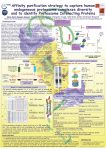 In the goal to efficiently purify all endogenous human proteasome complexes, we have optimized an affinity purification-mass spectrometry (AP-MS) strategy involving in vivo formaldehyde crosslinking to maintain the labile interactions between the 20S core complex and the regulatory complexes (Bousquet-Dubouch et al. Mol Cell Proteomics. 2009 May;8(5):1150-64).
In the goal to efficiently purify all endogenous human proteasome complexes, we have optimized an affinity purification-mass spectrometry (AP-MS) strategy involving in vivo formaldehyde crosslinking to maintain the labile interactions between the 20S core complex and the regulatory complexes (Bousquet-Dubouch et al. Mol Cell Proteomics. 2009 May;8(5):1150-64).
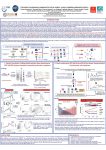 Next, to identify preferential associations within proteasome sub-complexes, we have developed a new integrated proteomic workflow based on proteasome immunopurification, label-free quantification using high resolution MS, protein correlation profiling (PCP), and statistical methods. From a wide set of human cell lines, we have shown that the two main proteasome sub-types, standard proteasome and immunoproteasome, interact with a different subset of important regulators (Fabre B. et al. Mol. Syst. Biol. 2015).
Next, to identify preferential associations within proteasome sub-complexes, we have developed a new integrated proteomic workflow based on proteasome immunopurification, label-free quantification using high resolution MS, protein correlation profiling (PCP), and statistical methods. From a wide set of human cell lines, we have shown that the two main proteasome sub-types, standard proteasome and immunoproteasome, interact with a different subset of important regulators (Fabre B. et al. Mol. Syst. Biol. 2015).
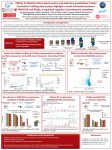 The PCP method has been further used to highlight new proteasome interacting proteins. In collaboration with O. Coux (CRMB, Montpellier), we have shown that FAM192a, a nuclear protein of previously unknown function that we renamed PIP30, is a major regulator of PA28γ functions (Jonik-Nowak B., Menneteau T. et al. Proceeding of the National Academy of Sciences 2018).
The PCP method has been further used to highlight new proteasome interacting proteins. In collaboration with O. Coux (CRMB, Montpellier), we have shown that FAM192a, a nuclear protein of previously unknown function that we renamed PIP30, is a major regulator of PA28γ functions (Jonik-Nowak B., Menneteau T. et al. Proceeding of the National Academy of Sciences 2018).
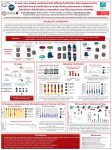 The dynamics of proteasome complexes have further been studied in space and time (Fabre et al. Mol. Cell Proteomics 2013. DOI: 10.1074/mcp.M112.023317). Proteasome activity is regulated at different levels by variations in the composition of 20S catalytic subunits, in the stoichiometry of bound regulators, and in the rate of the 20S catalytic core complex assembly (Fabre et al. J.Proteome Res. 2014).
The dynamics of proteasome complexes have further been studied in space and time (Fabre et al. Mol. Cell Proteomics 2013. DOI: 10.1074/mcp.M112.023317). Proteasome activity is regulated at different levels by variations in the composition of 20S catalytic subunits, in the stoichiometry of bound regulators, and in the rate of the 20S catalytic core complex assembly (Fabre et al. J.Proteome Res. 2014).
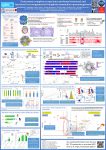 We describe new structural and functional aspects of a poorly characterized subtype of proteasome found exclusively in germ cells. The spermatoproteasome was recently shown to be essential for spermatogenesis, a process requiring intense proteolysis. Intriguingly, it differs from the constitutive proteasome by only one subunit – α4s, a non-catalytic subunit which replaces the constitutive α4 subunit. Here, we use modern mass spectrometry strategies to examine how the shift from α4 to α4s affects/regulates proteasome composition, dynamics, interactome and activity. Our data reveals a more complex process of regulation than previously suggested and sets the basis for structural and functional specificities of the spermatoproteasome.
We describe new structural and functional aspects of a poorly characterized subtype of proteasome found exclusively in germ cells. The spermatoproteasome was recently shown to be essential for spermatogenesis, a process requiring intense proteolysis. Intriguingly, it differs from the constitutive proteasome by only one subunit – α4s, a non-catalytic subunit which replaces the constitutive α4 subunit. Here, we use modern mass spectrometry strategies to examine how the shift from α4 to α4s affects/regulates proteasome composition, dynamics, interactome and activity. Our data reveals a more complex process of regulation than previously suggested and sets the basis for structural and functional specificities of the spermatoproteasome.
